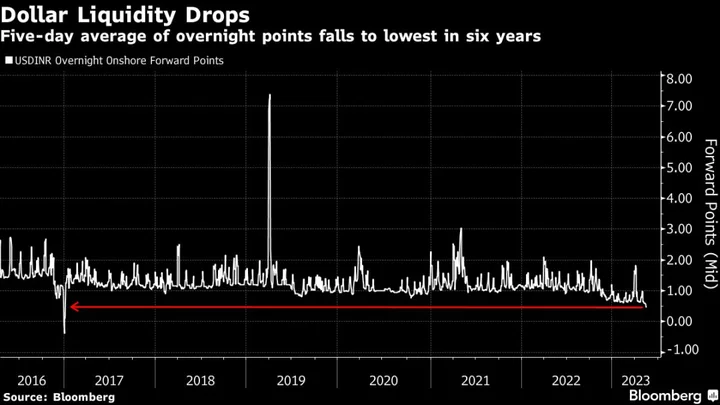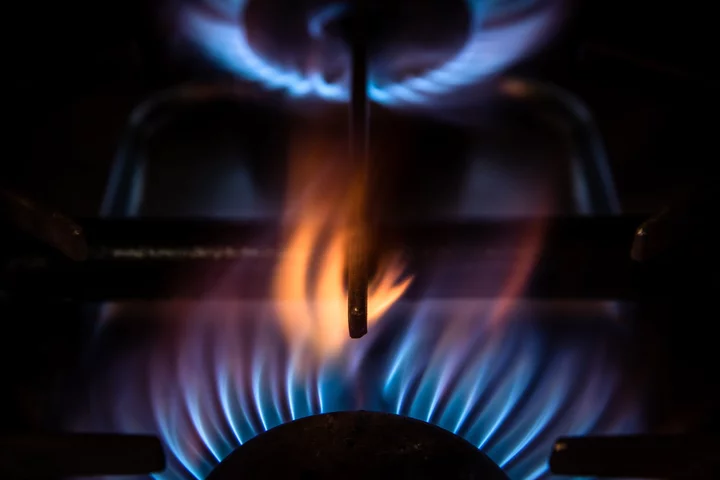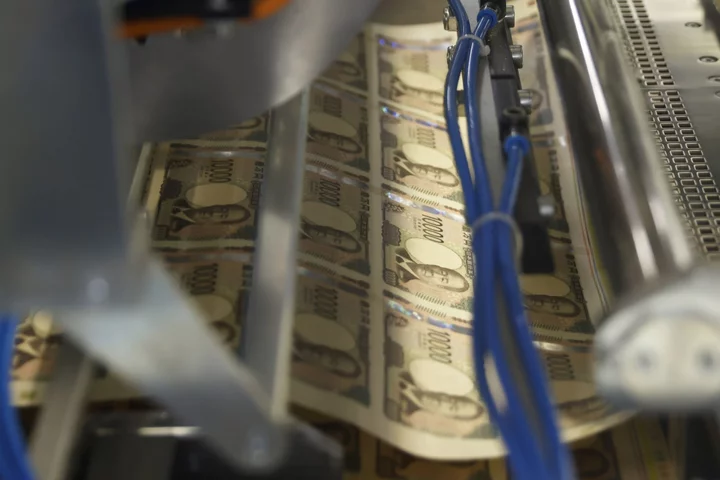Dollar purchases by the Indian central bank to limit the impact of foreign inflows are helping lead to shortages of the US currency in the Indian banking system and weighing on the rupee, according to analysts.
The rupee has given up all of this year’s gains, having been up about 1% at the beginning of May and among Asia’s best performers. Currency watchers say that’s because the Reserve Bank of India is mopping up dollars gushing into local stocks — sending a gauge of liquidity in the greenback to a more than six-year low.
India’s foreign-exchange reserves surged by almost $11 billion in the first two weeks of May, driven by combination of foreign inflows and valuation gains. The weakness in the rupee despite these robust inflows is seen as a sign the central bank wants to curb a sharp appreciation in the currency that can hurt exports amid a flagging economy.
“There is a mismatch between inflows and spot purchases,” by the RBI, said Kunal Sodhani, vice president at Shinhan Bank India, “The Fed being hawkish and possibly hiking again in June is also adding to rupee liquidity issues.”
India got $3 billion of foreign inflows into local stocks in May so far, the highest in Asia outside of Japan, according to data compiled by Bloomberg. Foreign investors bought about $126 million of bonds this month.
The surge in India’s reserves this month comes after a rise of $10 billion in April, driven by central bank asset purchases. That’s a signal the balance of payments may have swung into a surplus, according to Bloomberg Economics.
“A balance of payments surplus exerts upward pressure on the rupee that the RBI is likely to try to counterbalance via FX buying,” wrote economist Abhishek Gupta earlier this month.
--With assistance from Esha Raina Joshi.









